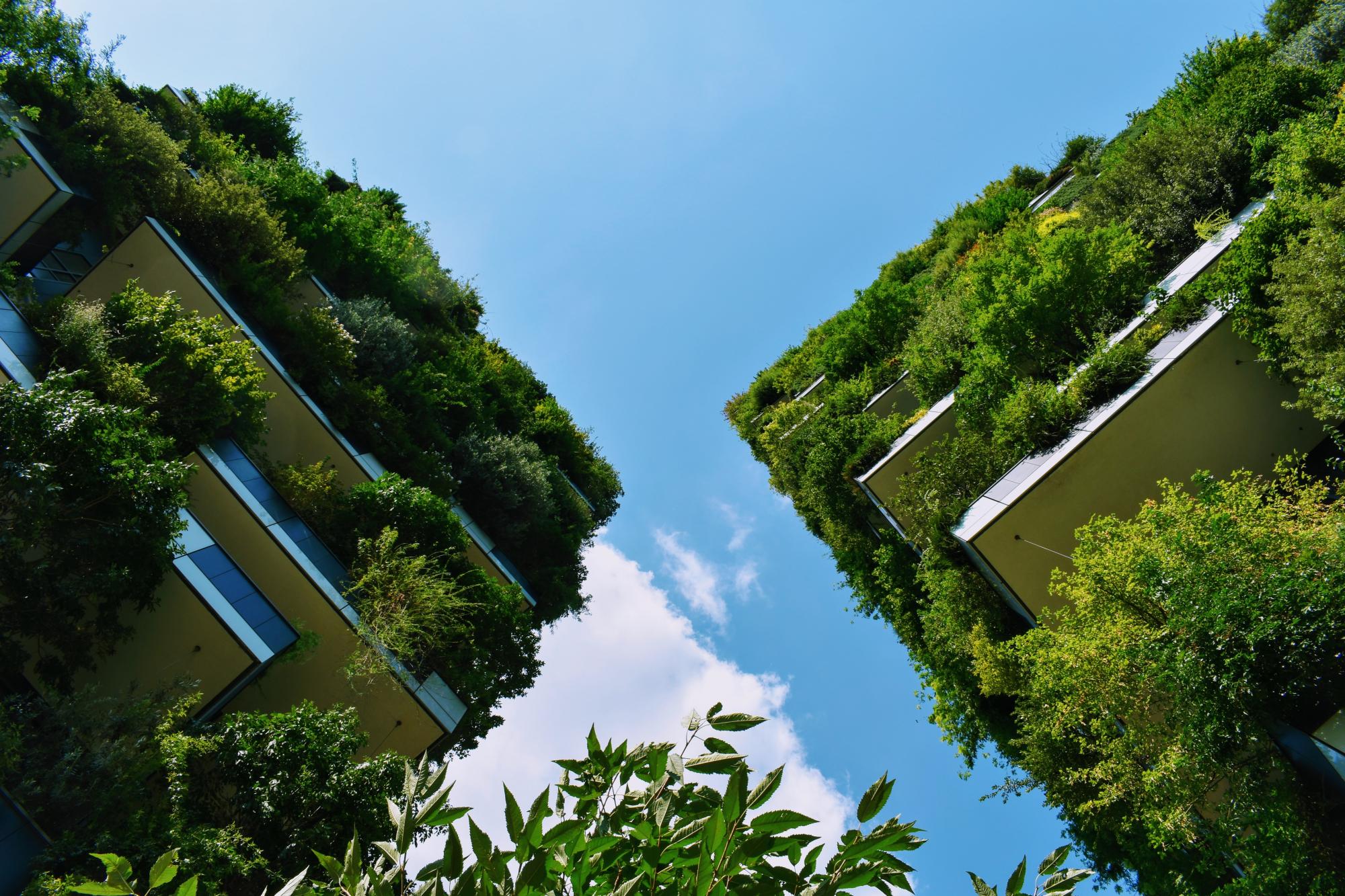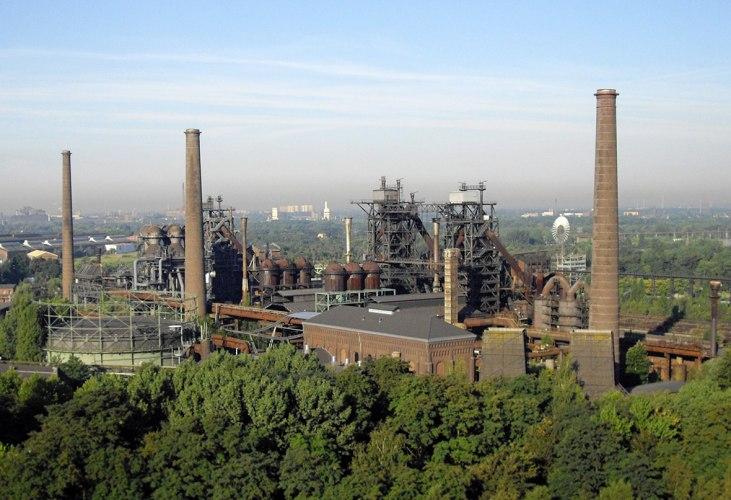Emscher Landschaftspark is a regional park system in the northern Ruhr area. It is a regional cooperation project between several post-industrial cities that want to create a coherent park system and regenerate natural environment in the area (Ref. 1). A crucial vision for the redevelopment is that the Emscher Landscape Park would act as a "green connector" between the settlements of the Rhur valley, following the path of the Emscher River and using the abandoned industrial areas along it as a unique form of green space (Ref. 6). "Created after the disappearance and decline of the industry in the area, it has been a key instrument for the territorial, social and economical transformation of what was once the largest industrial region in Europe" (Ref. 12).
Overview
Nature-based solution
- Grey infrastructure featuring greens
- Alley or street trees and other street vegetation
- Railroad bank and track greens
- Blue infrastructure
- Riverbank/Lakeside greens
- Institutional green space
- Parks and urban forests
- Large urban parks or forests
Key challenges
- Climate action for adaptation, resilience and mitigation (SDG 13)
- Climate change adaptation
- Climate change mitigation
- Water management (SDG 6)
- Improvements to water quality
- Green space, habitats and biodiversity (SDG 15)
- Habitat and biodiversity restoration
- Habitat and biodiversity conservation
- Green space creation and/or management
- Regeneration, land-use and urban development
- Conversion of former industrial areas
- Health and well-being (SDG 3)
- Enabling opportunities for physical activity
- Creation of opportunities for recreation
- Economic development and employment (SDG 8)
- Economic development: service sectors
- Tourism support
- Employment/job creation
- Cultural heritage and cultural diversity
- Protection of historic and cultural landscape/infrastructure
Focus
Project objectives
Implementation activities
Climate-focused activities
Climate change adaptation:
- Create or improve outdoor spaces to help people escape from urban heat
Climate change mitigation:
- Invest in public transport/bicycle infrastructure as a means to prevent car use
Biodiversity conservation or restoration-focused activities
Biodiversity conservation:
- Protect and enhance urban habitats
- Preserve and strengthen existing habitats and ecosystems
- Preserve and strengthen habitat connectivity
Biodiversity restoration:
- Rehabilitate and restore damaged or destroyed ecosystems
Main beneficiaries
- Local government/Municipality
- Private sector/Corporate/Company
- Citizens or community groups
Governance
Management set-up
- Government-led
Type of initiating organisation
- National government
- Regional government
- Local government/municipality
Participatory approaches/ community involvement
- Dissemination of information and education
Details on the roles of the organisations involved in the project
Project implemented in response to ...
Financing
Total cost
Source(s) of funding
- Public national budget
- Public regional budget
- Public local authority budget
- Corporate investment
- Funds provided by non-governmental organization (NGO)
Type of funding
- Earmarked public budget
- Direct funding (grants, subsidies, or self-financed projects by private entities)
Non-financial contribution
Impacts and Monitoring
Environmental impacts
- Green space and habitat
- Increased green space area
- Increased ecological connectivity across regeneration sites and scales
- Restoration of derelict areas
Economic impacts
- Increase of green jobs (e.g. paid employment positions)
Socio-cultural impacts
- Social justice and cohesion
- Improved liveability
- Improved access to urban green space
- Health and wellbeing
- Gain in activities for recreation and exercise
- Cultural heritage and sense of place
- Protection of natural heritage
- Protection of historic and cultural landscape / infrastructure
- Increased sense of place identity, memory and belonging
- Education
- Increased support for education and scientific research
Type of reported impacts
Presence of formal monitoring system
Presence of indicators used in reporting
Presence of monitoring/ evaluation reports
Availability of a web-based monitoring tool
References
2. Route Industrie Kultur (2017). Heritage Trail. Available at: Source link (Accessed: November 8, 2020).
3. Metropole Ruhr (2017). Emscherland 2020: Partner konkretisieren Zusammenarbeit. Available at:Source link (Website not available in 2020).
4. Metropole Ruhr (2017). Beteilungen ung Eigenbetriebe. Available at: Source link (Accessed: November 8, 2020).
5. Metropole Ruhr (2017). Klimamessstation beim Regionalverband Ruhr zeichnet Klimadaten auf. Available at: Source link (Website not available in 2020).
6. Danish Architecture Centre (2017). EMSCHER PARK: FROM DERELICTION TO SCENIC LANDSCAPES. Available at: Source link (Website not available in 2020).
7. Bothmann, Frank (n.d.). Landscape Regeneration Metropolis Ruhr Strategic and operational approaches Regionalverband Ruhr Frank Bothmannm. Available at: Source link (Accessed: November 8, 2020).
8. Danish Architecture Centre (n.d.). The green heart of the Ruhr Metropolis. Available at: Source link (Website not available in 2020).
9. Lethmate, G. and Spiering, H. (n.d.). Emscher Landscape Park - a new regional park in the Ruhr area (Germany). Available at: http://81.47.175.201/PE_Sta_Perpetua/attachments/article/75/Source link (Accessed: November 8, 2020).
10. Freie Refarate (n.d.). Planung und Entwicklung der heutigen Emscher Zone. Available at: Source link (Accessed: November 8, 2020).
11. Regionalverband Ruhr (n.d.). Emscher Landschaftspark - Das grüne Herz der Metropole Ruhr. Available at: Source link (Accessed: November 8, 2020).
12. Barba, Jose Juan, and Portillo, Andrea (2015). The Emscher Landscape Park. Available at: Source link (Accessed: November 8, 2020).
13. Metropole Ruhr (n.d.). Emscher Landscape Park Visitor's Guide Available at: Source link (Accessed: November 8, 2020).
14. Lindy Institute for Urban Innovation (n.d.). Emscher Landscape Park. Available at: Source link (Accessed: November 8, 2020).
15. Emscher Kunst (2016). Emscher Landschaftspark. Available at: Source link (Accessed: November 8, 2020).
16. Metropole Ruhr (2020). Emscher Landscape Park The central park of the Ruhr Metropolis. Available at: Source link (Accessed: November 8, 2020).

